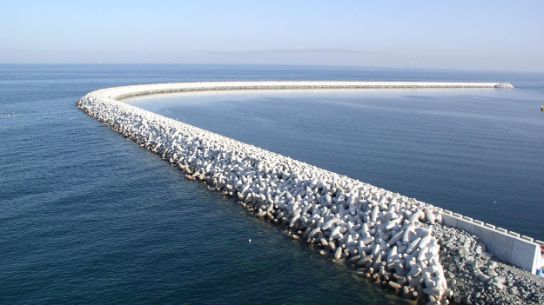EnergieRijk Den Haag
Transition paths for the sustainability of existing buildings
Sixteen buildings 'fossil fuel free' by 2040
Energy-saving measures
'Trias Energetica' sustainable design principle
Sixteen buildings 'fossil fuel free' by 2040
Energy-saving measures
'Trias Energetica' sustainable design principle
Managers of large properties such as office buildings face a major task: how to make properties more sustainable and comfortable in a cost-efficient manner. In the context of EnergieRijk Den Haag, Witteveen+Bos drew up the various transition paths containing options for customisation for asset managers for, among others, the Central Government Real Estate Agency.
The project aims to make five government offices close to the political centre of the Netherlands more energy sustainable. The buildings house various ministries and government bodies and range from 6,000 to 40,000 m2. These properties, the newest of which was completed in 2000, already have a good energy performance: label A. As the owner, the Central Government Real Estate Agency wants to make the buildings more sustainable; mainly as part of the ambitions set out in the Climate Agreement. The corresponding targets were set at achieving at least a baseline level of 80-40 kWh/m2/year (Label A+++) and, over time, a progressive level of 40-0 kWh/m2/year (Label A++++).
Mapping
In determining the options for customisation, our experts started with an analysis of the property, which included mapping dimensions, materials and energy consumption, as well as installation engineering. This data is used to determine the energy performance of the building and the corresponding energy label. The next step is to look at possible measures to make the building more sustainable. Technical feasibility plays a major role in this, with our structural and plant engineering consultants enabling integrated analysis and advice.
This analysis, with emphasis on technical feasibility, is translated into packages of measures – the transition paths – that ensure energy performance is increased to the client’s ambition level. In the case of EnergieRijk Den Haag label A+++, or even A++++. These measures are also linked to a timeline. This timeline is important because the steps towards increased sustainability may result in drastic measures such as temporary relocation; operations that require organisation and preparation.
Complex measures
The specific improvements in the custom measures start with ‘low-hanging fruit’: updates like LED lighting or the replacement of single glazing. These are examples of measures that yield high savings with limited effort. Additionally, sustainability is achieved with more complex measures that have potential impact on the immediate surroundings of a property. Take, for example, installing or replacing façade insulation. This may require above-average efforts and costs in terms of both the literal implementation and impact on the local environment (conversion/distraction/traffic delays).
In addition to conducting a cost-benefit analysis and a feasibility study, our experts also weigh sustainability factors. Sustainability values are an increasingly important decision factor. In most cases, we apply the Environmental Cost Indicator (ECI) to identify the carbon footprint of measures (labour and raw materials), among other things.
Thermal management
In addition to measures aimed at insulation of the shell, we also focus on thermal management in the (office) buildings. How high is the energy consumption of these plants, and how can we optimise it? Specifically, it is about reducing the energy demand within the building without sacrificing thermal comfort. The corresponding options partly lie with building physics measures, such as façade insulation, shading, et cetera. However, there are also options in terms of system engineering to reduce the carbon footprint, for instance by insulating piping, a good example of a quick win. A more drastic system measure is the transition from (natural) gas to heat pumps.
About EnergieRijk Den Haag
EnergieRijk Den Haag (ERDH) is a collaboration between the state, the province of South Holland, the municipality of The Hague and various (semi-)public and private partners. The initiative aims to make the main government buildings in the centre of The Hague fully sustainable. ERDH was established on the understanding that sustainable system and energy concepts can be achieved in a smarter way if they are applied for all buildings rather than using the usual ‘building by building approach’. For EnergieRijk Den Haag, the Trias Territoria is the action perspective: save energy, generate it locally and deploy it at scale.

More information?

Our projects
Every year we work on almost 5,000 projects on water, infrastructure, environment and construction.
